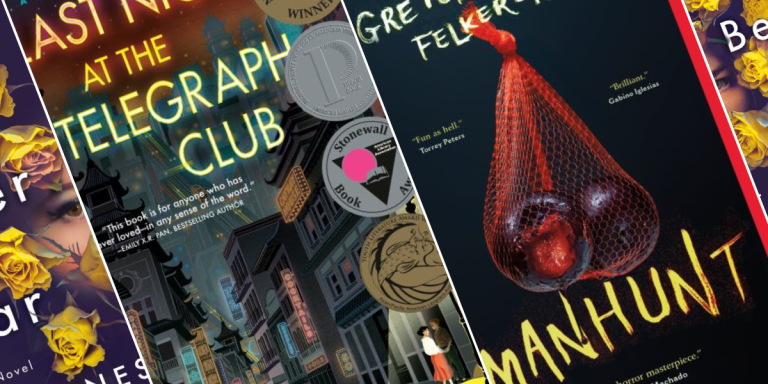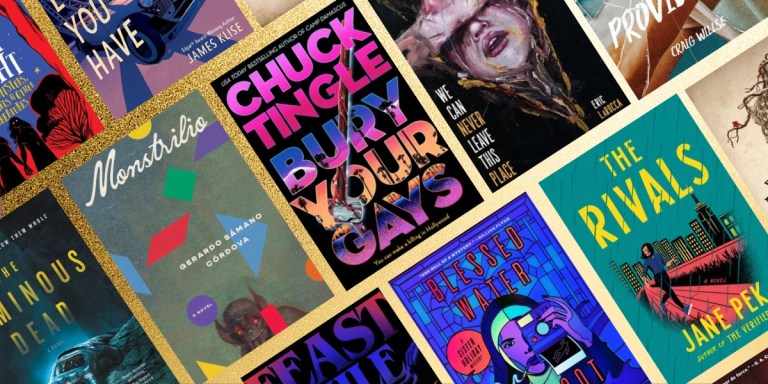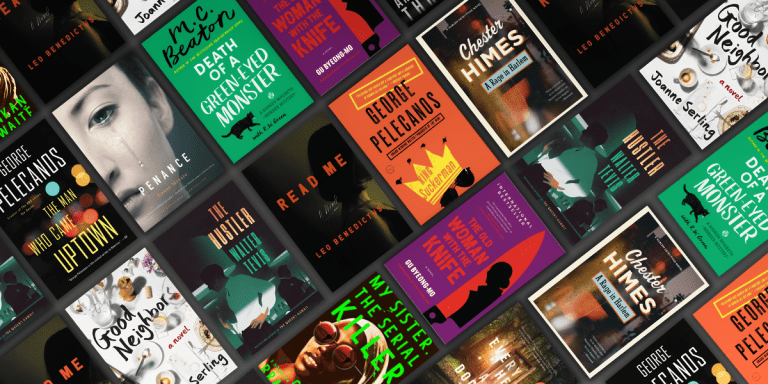Where Design Meets Disaster: An Interview with Rachel Howzell Hall

We sat down with esteemed thriller author Rachel Howzell Hall, whose hits include the Lou Norton series and many others, to discuss her newest thriller, What Fire Brings. Not just a tale about a young Black writer looking to find a missing friend, What Fire Brings explores the isolation and power of society’s disconnected elites. With no further ado, let’s get into all things Rachel Howzell Hall.
NS: You’ve said before that you like to tell “Los Angeles stories” — many of your books center around LA and California in general. Here, you move out of the city and into Topanga Canyon. What motivated you to move your perspective away from the city, and what keeps California such fertile narrative ground for you?
RHH: It’s funny how Los Angeles works. Topanga Canyon, technically part of the county, has a say in the city’s mayor despite its remote, almost secluded feel. Meanwhile, I live smack dab in the middle of the city, yet our area remains unincorporated, lacking the same influence. This dynamic always intrigues me – how hidden pockets like Topanga or North Hollywood hold more sway than central city dwellers… who are also primarily people of color.
That’s part of what drew me to Topanga Canyon as a setting. On a map, it’s a mere 30 miles away, yet geographically, it’s a world apart. One winding, precarious road, Topanga Canyon Boulevard, snakes through the Santa Monica Mountains, a daunting journey for the uninitiated. The darkness, drop-offs, and sheer remoteness make it a place that feels isolated despite its proximity to the city.
This paradox extends beyond accessibility. While a quick glance might make it seem easily reachable, the demographics paint a different picture. There aren’t many Black people in Topanga, and stories about navigating unfamiliar spaces are a theme I constantly explore. But here’s the fascinating twist: even for those who “belong,” Topanga isn’t entirely welcoming. Mountain lions, wildfires – the very nature that makes it beautiful harbors a constant threat. The image of the 405 freeway engulfed by flames on the LA Times’ front page perfectly captures this contrast – breathtaking beauty juxtaposed with the ever-present danger of nature’s fury.
Living in Southern California is a constant dance with this reality. You’re surrounded by stunning landscapes that hold the potential to wreak havoc. There are countless stories to be told in these places, stories that capture the duality of our environment.
NS: In What Fire Brings, nature is just as much of an opponent to Bailey as any person. Simultaneously, the narrative is deeply engaged with literature, about a writer working with writers. Did this tension between the intellectual and the physical inform your writing or influence the narrative? If so, how?
RHH: The setting of my story was absolutely influenced by the narrative. Stunning natural environments like Topanga Canyon foster creativity. The vastness provides space for contemplation, allowing the imagination to flourish. This translated beautifully into the story.
But beyond aesthetics, Topanga Canyon embodies a deeper theme – the isolation experienced by those who achieve success. The story explores the concept of mentorship and how, amidst celebration, some forget the importance of extending a helping hand. We see this particularly in the aftermath of movements like Black Lives Matter, where initial enthusiastic support can wane over time, leaving those who need assistance feeling abandoned.
The seclusion of Topanga Canyon mirrors this isolation – physically distant and potentially inaccessible. This parallel extends to the publishing world, where dedicated imprints focused on diverse voices are sometimes shuttered, leaving talented authors without guidance. This story explores the complexities of success, mentorship, and the persistent challenges faced by marginalized communities.
NS: Speaking of books, what was it like writing a thriller about a thriller writer? Did that add any ironic wrinkles for you in the narrative? How much of yourself did you put into Bailey?
RHH: There’s a distinct difference between me and Bailey, the protagonist of my novel. I’m more established, a bit world-worn in comparison to her wide-eyed optimism. Bailey dabbles in writing, yearning to be a true author. It’s this contrast that fuels the narrative.
While the book itself might not be as overtly autobiographical, I do see myself in Bailey’s moments of grappling with identity amidst overwhelming pressure. The pressure to create, the pressure to survive, the pressure to simply breathe – these are all experiences I can relate to. Being a thriller writer within a community of readers and writers can be a double-edged sword. Some readers have labeled my work “woke,” a term often misused to dismiss diverse voices. I’ve received negative reviews from readers who haven’t even opened the book, making assumptions based solely on my background.
The struggle to find my voice is real. My attempts to explore broader themes, including women’s issues, have sometimes faced resistance. It’s a constant battle.
NS: You’ve said that to really dig in and write a novel, there needs to be an issue you’re passionate enough about to get through 90,000 words of writing. Can you tell us a bit about what issue or issues gave you the need to write Bailey’s story?
RHH: My story explores the profound sense of unease that can permeate our lives. It’s the feeling of never quite belonging, the looming shadow of danger that disrupts our search for self-discovery. This undercurrent of disquiet is a reality for many, particularly women, and especially Black women. It’s a truth I deeply understand and channeling that experience into Bailey’s story felt natural.
However, while writing, I was personally facing a barrage of challenges. Family issues, health concerns, and the loss of loved ones created a sense of exhaustion. Like Bailey, I found myself caught in a state of perpetual motion, doing everything yet feeling strangely frozen. There were even moments that mirrored the disorientation of dissociative fugue, where I’d find myself somewhere without recollection of the journey.
This experience of being on autopilot resonates deeply, I believe, in a post-pandemic world. We’re all grappling with a sense of disorientation. What Fire Brings explores how we navigate these uncertainties, how we confront our mortality in the face of pandemics, wildfires, and natural disasters that threaten our world, both globally and personally. The interplay between these external threats and our internal struggles is a source of endless fascination for me.
NS: We need to know: What are you currently reading and/or watching? Anything that informed writing What Fire Brings?
RHH: The writing process coincided with a period of intense personal encounters with death and loss. Witnessing how those around me, me included, grappled with these experiences was deeply impactful. It shone a light on the complex role money plays in such situations, highlighting the consequences of neglecting important matters.
While navigating these challenges, I found solace in video games, Baldur’s Gate 3, especially. These games were a constant source of escape for me. Immersing myself in these virtual worlds provided a temporary reprieve from the emotional weight of reality.
NS: You’ve written both a variety of standalone novels and a long running series about our favorite detective, Lou Norton. What’s the experience like of writing a brand new character such as Bailey versus a character you’ve spent a lot of time with like Lou?
RHH: Crafting Bailey proved to be an intricate process. Unlike my previous characters, I wasn’t merely building one identity, but a multifaceted persona with hidden depths. The complexity of her situation – a character pretending to be someone else – added a whole new layer of challenge.
To delve into Bailey’s psyche, I resorted to various techniques, from personality tests like Myers-Briggs to astrological charts. What type of animal would she be? Those types of things. It was a long, methodical process. Unfortunately, the personal struggles I was facing at the time hindered my progress some, forcing me to request a deadline extension from my editor, a first for me.
The layers within Bailey’s story were particularly demanding. While my previous protagonist, Lou, came easier to me, I suspect revisiting her now, especially within the context of the pandemic, would force me to into a deeper exploration of another level of PTSD.
NS: What are three books that have inspired your writing journey the most?
RHH: Dennis Lehane’s Shutter Island, like my story, explores the complexities of identity and memory. Stephen King’s IT, such a mastery of place-setting. Finally, Toni Morrison’s Beloved profoundly impacted me with its exploration of the haunting past and the sacrifices we make for loved ones. Beloved shows the power of layered storytelling. It’s a work that demands multiple readings and personal experiences to fully grasp its message. I aim to create narratives rich with this kind of depth, hoping that readers are just as excited to explore the layers I weave.
NS: What’s next for you now? Anything you can mention to us?
I’m thrilled to announce my foray into the world of romantasy! My debut novel, The Last One, hits shelves December 3, 2024, and it’s the first of a four-book series. This story follows a woman who awakens in a field, disoriented and with no memory of her identity or how she arrived there. This theme of a woman thrust into an unfamiliar and unsettling situation resonates with my other characters, Bailey, Coco, and Mickie, especially, from my previous stories.
The Last One is available for pre-order now, and I can’t wait to share this exciting new chapter with my readers!
Bailey Meadows has just moved into the remote Topanga Canyon home of thriller author Jack Beckham. As his writer-in-residence, she’s supposed to help him once again reach the bestseller list. But she’s not there to write a thriller–she’s there to find Sam Morris, a community leader dedicated to finding missing people, who has disappeared in the canyon surrounding Beckham’s property. The missing woman was last seen in the drought-stricken forest known for wildfires and mountain lions. Each new day, Bailey learns just how dangerous these canyons are–for the other women who have also gone missing here…and for her. Could these missing women be linked to strange events that occurred decades ago at the Beckham estate? As fire season in the canyons approaches, Bailey must race to unravel the truth from fiction before she becomes the next woman lost in the forest.
By clicking 'Sign Up,' I acknowledge that I have read and agree to Hachette Book Group’s Privacy Policy and Terms of Use


